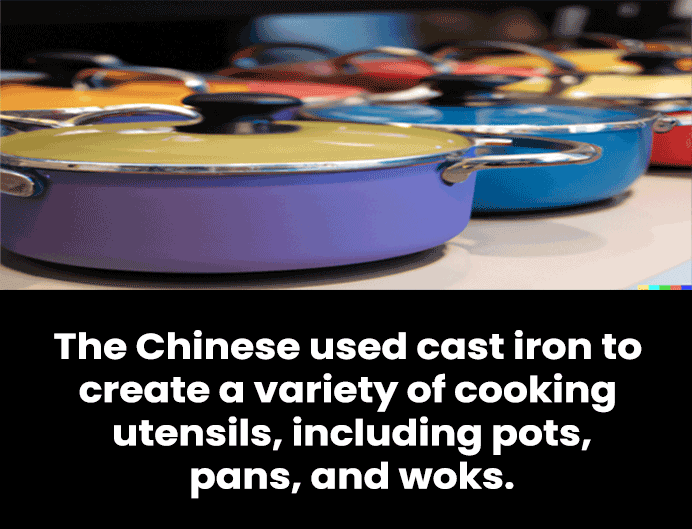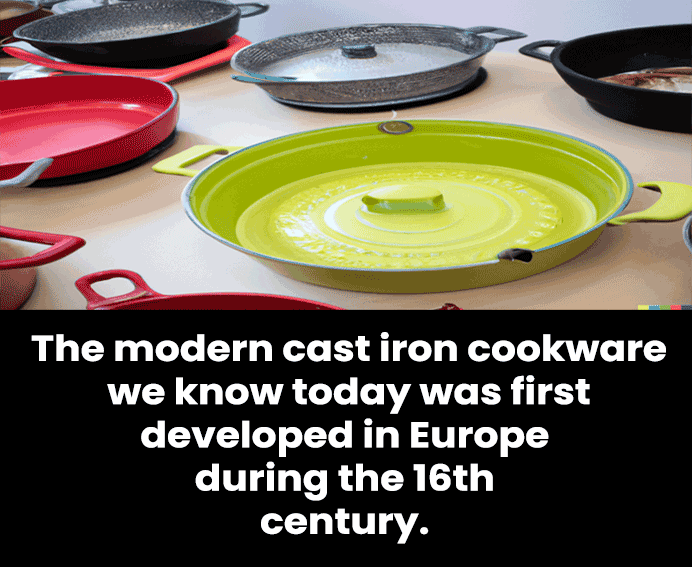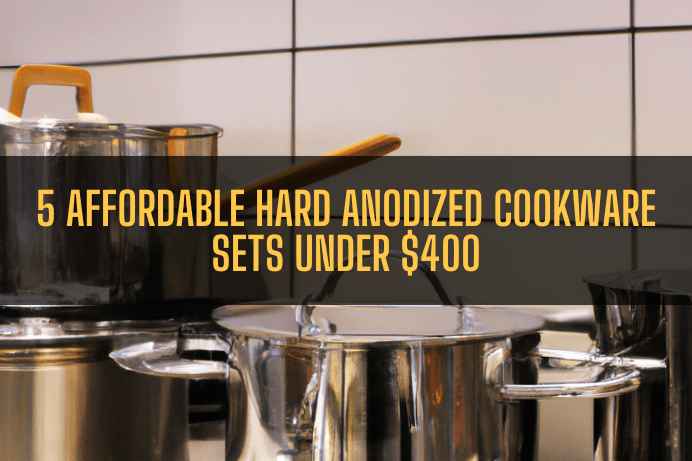When Was Cast Iron Cookware Invented? History From Ancient China To Modern Kitchens
Cast iron cookware is a timeless kitchen staple known for its durability, versatility, and even heat distribution. From the traditional Dutch oven to the modern-day skillet, cast iron cookware has been used by generations of home cooks to prepare delicious meals. But when exactly was cast iron cookware invented, and how did it become such a beloved tool in the kitchen?
Cast iron cookware was invented in ancient China and later spread to Europe and America. The invention of the sand-casting technique made it more affordable and accessible to the masses, leading to its widespread use in households and restaurants.
In this blog, we will take a closer look at the history of cast iron cookware, from its ancient origins to its modern-day revival.
Cast Iron Cookware; Tracing Back to Ancient China

Cast iron cookware can be traced back to ancient China, where it was used as early as the Han Dynasty (206 BC-220 AD) for cooking. At that time, cast iron was considered a luxury item and was often reserved for wealthy families. The Chinese used cast iron to create a variety of cooking utensils, including pots, pans, and woks.
The Development of Modern Cast Iron Cookware in Europe

While cast iron cookware was used in China for centuries, the modern cast iron cookware we know today was first developed in Europe during the 16th century. At that time, blacksmiths began using sand molds to create cast iron pots and pans. Cast iron cookware quickly gained popularity in Europe, as it was durable, heat-resistant, and affordable.
One of the early adopters of cast iron cookware in Europe was the Dutch. They were some of the first Europeans to produce cast iron cookware on a large scale. The Dutch oven, a popular type of cast iron cookware, gets its name from the Dutch traders who brought it to the United States. The Dutch oven was used by early American settlers for cooking stews, soups, and other dishes over an open fire.
The Advancements in Manufacturing and Mass Production of Cast Iron Cookware
As the popularity of cast iron cookware grew, so did the demand for it. In the 19th century, advancements in manufacturing allowed for the mass production of cast iron cookware. Companies such as Griswold, Wagner, and Lodge began producing cast iron cookware that was affordable and accessible to the average person.
During this time, the process of sand casting was replaced by automated casting machines, which allowed for faster and more efficient production. This mass production made cast iron cookware more affordable, and it became a staple in many homes across the United States.
Cast Iron Cookware in the 20th Century and Today

Cast iron cookware became more popular in the 1970s, cast iron fell out of favor with many home cooks. The non-stick coating offered an easy clean-up option and prevented food from sticking to the surface.
But in recent years, cast iron cookware has seen a resurgence in popularity, with many people seeking out the durability and versatility that it offers. It has also become a favorite among chefs, who appreciate its ability to create a perfect sear on meats and vegetables.
The Growing Popularity Of Cast Iron Cookware: Reasons Behind The Revival
Cast iron cookware is making a comeback in restaurants and homes across the country. Its getting populas despite the prevalence of modern aluminum and stainless steel options. Here are the reasons why cast iron is becoming popular again:
1. Health Concerns with Other Cookware:
With the discovery of health hazards associated with non-stick-coated pans emitting toxic fumes when heated to a certain temperature, many people are turning to cast iron cookware as a safer alternative. Cast iron does not pose any of these risks and can withstand high temperatures without any negative effects.
2. Durability:
Many people prefer to invest in cookware that will last them for a long time, rather than having to replace it every few years. Cast iron cookware can last for hundreds of years, with proper care and maintenance.
3. Visual Appeal:
Some restaurant owners are incorporating cast iron cookware into their presentations due to its rustic and unique aesthetic appeal. Cooking with cast iron allows for sizzling fajitas and giant skillet cookies, making for an impressive visual display.
Cast iron cookware is making a comeback due to its safety, durability, and visual appeal. Join the cast iron resurgence by incorporating this classic cookware into your kitchen.
FAQS
Which cast iron skillet brand has the longest history?
Lodge Cast Iron holds the title of the oldest and longest-running cast iron manufacturer in the US. Its founder, Joseph Lodge, reactivated a railroad foundry in South Pittsburg, Tennessee in 1896, originally named Blacklock.
Which country is credited with the invention of casting iron?
Cast iron manufacturing was first developed in China during the sixth century BCE and has remained largely unchanged since then. The process involves pouring molten metal into a sand mold, which is then broken apart when the pan cools, resulting in a single-piece pan, including its handle.
Is it possible for old cast iron to rust?
If a protective layer of seasoning, which is a carbonized oil, is not coated on it, cast iron can rust. Moisture exposure, such as soaking in the sink, being put in the dishwasher, air-drying, or being stored in a damp area, can cause even a well-seasoned cast iron pan to rust.
Is cast iron cookware considered healthy to use?
Yes, cast iron cookware is considered a healthy option for cooking. It allows for the use of less oil and eliminates the need for non-stick coatings. These coatings may contain harmful chemicals, and can even add a small amount of iron to your diet.
Conclusion
Cast iron cookware has come a long way since its ancient origins in China. Its journey from a luxury item to a widely accessible kitchen staple is a testament to its durability, versatility, and timeless appeal. Whether you’re a seasoned chef or just starting out in the kitchen, cast iron cookware is an essential tool for creating delicious meals that your family and friends will love.





